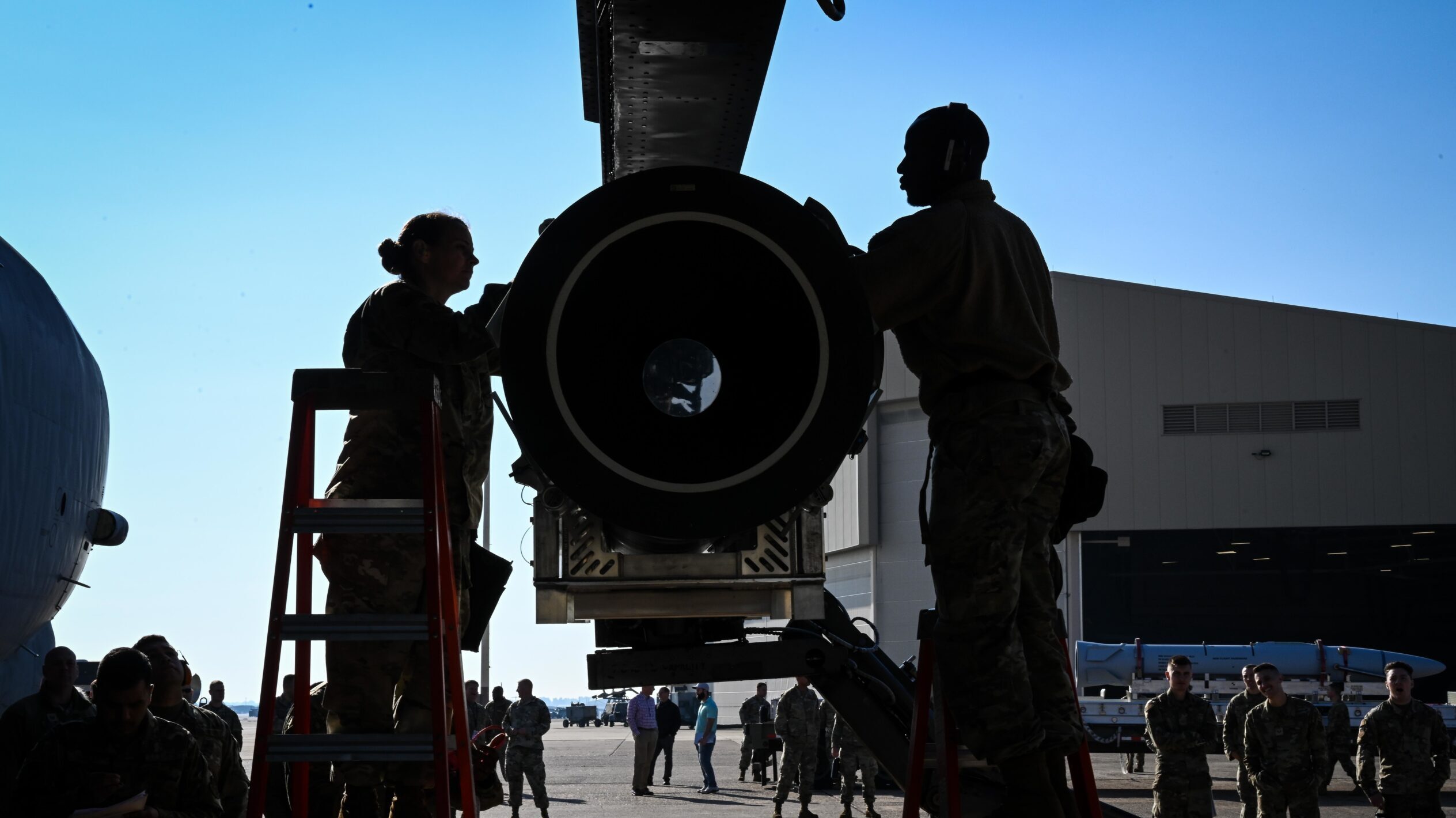
U.S. Air Force Master Sgt. Marcella Philips, 2nd Maintenance Group weapons standardization loading standardization crew chief, and Tech Sgt. Darrell Stewart, 307th Aircraft Maintenance Squadron loading standardization crew member, secure the Air-Launched Rapid Response Weapon to the B-52H Stratofortress ejector rack, at Barksdale Air Force Base, Louisiana, November 2, 2022. (U.S. Air Force photo by Airman Nicole Ledbetter)
WASHINGTON — The Air Force recently conducted another all-up round test of the AGM-183A Air-launched Rapid Response Weapon (ARRW), but the service won’t say whether this test was a success — echoing how the service handled a previous failed launch of the weapon.
“A B-52H Stratofortress conducted a recent test of the All-Up-Round AGM-183A Air-launched Rapid Response Weapon. This test launched a full prototype operational hypersonic missile and focused on the ARRW’s end-to-end performance,” an Air Force spokesperson said in a press release.
“The Air Force gained valuable new insights into the capabilities of this new, cutting-edge technology. While we won’t discuss specific test objectives, this test acquired valuable, unique data and was intended to further a range of programs such as ARRW and HACM. We also validated and improved our test and evaluation capabilities for continued development of advanced hypersonic systems,” the spokesperson added.
It is possible that the test was successful or at least met some of its objectives, but not announcing it as such raises the reality that it may be yet another failure for the weapon. Following the ARRW program’s previous all-up-round — or fully assembled — test in March, the Air Force conspicuously declined to say whether the test met all its objectives, with service secretary Frank Kendall later confirming that it was “not a success.” The ARRW had failed to transmit necessary data from the test flight, according to a report in Bloomberg.
The ARRW, made by Lockheed Martin, is a hypersonic glide vehicle launched by bombers. Its development has been bumpy, and following mixed results and seemingly contradictory messages from service officials about its future, some lawmakers are now inclined to kill the program in fiscal 2024.
The Air Force, Kendall said in March following the unsuccessful test, was now “more committed” to the service’s other fast-flying prototype, the Hypersonic Attack Cruise Missile (HACM) — a smaller, air-breathing missile capable of launching from a greater number of platforms. Raytheon and Northrop Grumman are partnered on HACM.
In a statement, Lockheed expressed confidence in the ARRW’s design.
“With this recent test, Lockheed Martin is confident in the ARRW missile’s operational end-to-end capability at hypersonic speeds, validating the design and production of the system. We remain committed to partnering with the U.S. Air Force on hypersonic-strike capability and have established a production line alongside development and testing activities to accelerate the delivery of these systems to the U.S. military,” the company said.
Congress has been pushing the military services to accelerate their respective hypersonic development programs, noting that peer adversaries Russia and China already have operational hypersonic weapons in their arsenals.
Hoping for a speedy development for ARRW in what would’ve been the Air Force’s first hypersonic weapon, officials pursued it as a Middle Tier Acquisition (MTA) program, though the weapon’s goals did not pan out.
“The Committee believes that the Department must be clear-eyed that utilizing innovative or rapid acquisition authorities carries inherent acquisition risk to cost, schedule and performance,” Senate appropriators wrote in their markup of the FY24 defense spending bill.








